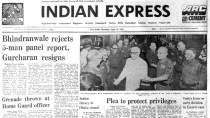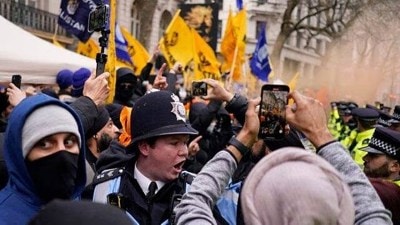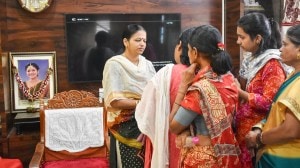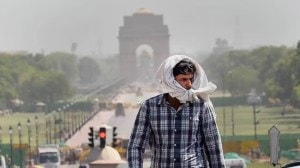- India
- International
And there’s no one else to blame
Since Modi has centralised power, the buck rests with him
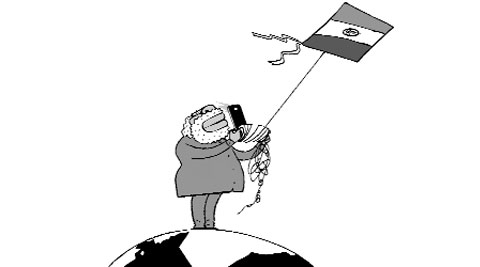 Source: C R SASIKUMAR
Source: C R SASIKUMAR
By Adam Roberts
Outside interest in India leaps and falls roughly in line with its rate of economic growth. For far too long, the country isolated itself, hid away from global trade and capital, and stayed poor as a result. In turn, its international role was far too puny for such a massive population. India left South Asia, its hinterland, to degenerate into the least interconnected region in the world. Only in the past two decades has that, thankfully, begun to change. A more open economy and sustained growth helped stir commercial, strategic and other kinds of foreign attention. As India has grown economically and reached out, even building modestly better relations in its region, its position in the world has also expanded.
In four years so far as The Economist correspondent in Delhi, I have seen once-intense foreign appetite for news from India first shrink and then begin to grow again. While corruption, misdirected official policies and weak leadership dominated the news, interest from abroad waned. Then, over the past year, the triumphal march of Narendra Modi to office again provoked attention. New evidence of faster growth will lift interest higher. Imagine the rush of excitement when, one day, India nudges ahead of Chinese growth rates. Great bursts of diplomatic activity help too. But it is largely on the back of economic might that interest rises in India’s future strategic, military and diplomatic heft.
Modi’s arrival as India’s most dominant character, of course, drew intense attention. Mostly that is because he is a moderniser, anxious to make government function better, wielding a big electoral mandate, who says he will improve the business climate, open up to foreigners and get the economy racing. Unabashed ambitions to make India strong, active internationally and influential in its immediate region are welcome. Separately, some questions linger about stability and tolerance. Is Modi’s continued close association with far-right Hindu nationalists an indication of social tension ahead? What if a majoritarian leader proves clumsy in his treatment of minorities, a fifth of India’s population? How hostile is he to immigrants? Are signs of an uptick in communal violence the start of a trend? Will far-right extremists who spout provocative claims, such as that all Indians are Hindus, be contradicted in public by the prime minister?
The broad task before Modi is to deliver a future as stable, tolerant and welcoming to all diverse groups as possible — including foreigners — but also a country much more prosperous, efficiently run and influential abroad. Three months after taking office, how is he doing? One opportunity to take stock is at The Economist India Summit in Delhi on September 11. A day-long event, it offers frank, open and informed discussion. Business leaders from India and abroad, experts and investors, representatives of the government and commentators will assess the record so far, and ask what comes next. No one can doubt that the political rupture of the general election and the size of the mandate won by Modi and the BJP mark a big political turn. What is less clear is how decisively the government can break from previous policies or how quickly it can reform bureaucracy, slash red tape and overcome vested interests.
One evident change is in style. Modi’s election campaign was intensely personal — cult-like, said critics — and in office, his rule looks near-presidential. Much decision-making is centralised. He works hard, claiming that he only sleeps three or four hours a night, but generates energy through yoga. So far, the signs are that he will at least be far readier than his predecessor to take decisions. Thus few, at least beyond apparently disaffected rivals in the ruling party, see a presidential-style leader as a problem. Many voters, plus investors, who craved decisive, transparent and responsive leadership, still cheer him on.

How this will be sustained is less clear. One man, on however little sleep, can only do so much. The first three months in office have seen a remarkable focus on foreign affairs, with Modi taking trips to Brazil, Bhutan, Nepal and (forthcoming) to Japan and America. His hand is heavily directing foreign policy, as India seeks deeper engagement in the rest of Asia, hosts a series of foreign leaders, veers from warmth to hostility towards Pakistan and rethinks its position at the World Trade Organisation. Less attractive was the message he sent in July by scuppering the WTO deal on trade facilitation. He may pay a price, whatever his domestic reasons for that. He immediately lost some of his international reputation as a pro-growth figure ready to take politically difficult decisions to fast open India as a trading economy. That came shortly after an interim budget that underwhelmed, despite some measures for foreign investment in defence, insurance and railways. Now the pressure is on Arun Jaitley, the finance minister, to deliver a much more decisive, reforming budget early next year. By then there will be no excuse about lacking time for preparation.
Is it possible that the innumerable pressures on Modi pose too much distraction? He spoke, tellingly, in his speech on August 15, of discovering factions within government. They have to be overcome if fine-sounding policies — whether on sanitation, infrastructure or manufacturing — are to be implemented. Rivalries between ministries, bureaucrats, lobbyists and politicians cannot be wished away. To be seen as a truly reformist leader, in other words, Modi must find ways to turn his promises into facts on the ground. It looks troubling that the pace of appointments and reforms in government is slow. Is the economic advisor to be a pro-market figure after all? Is the Planning Commission really to be replaced by a more liberal think-tank, and with what powers? Are the ministries of finance, defence and corporate affairs really best huddled together under the control of one man? Might it not prove useful to appoint a spokesman for the prime minister one day?
These remain relatively early days in office, too soon to talk of opportunities missed. It may be that the ruling party and its boss assume that the forthcoming state elections will bring victories and, in turn, eventually greater sway in the Upper House of Parliament. But the usual presumption of those who win a landslide electoral victory should be that your political capital begins to decline from Day One. Barack Obama’s power as president has gradually ebbed in his years in office. In Britain, Tony Blair’s domestic reforms, for example to Britain’s constitution, came early in office. Nawaz Sharif in Pakistan stormed to victory in 2013 with a mandate comparable to Modi’s — a year later, Sharif’s hold on power looks tenuous and he has achieved little.
Since Modi has centralised power, the buck rests with him. Unlike his predecessor, he cannot blame anyone else if his government does not deliver. A nationwide goods and services tax could give a big lift to the economy and draw in investors. High-profile examples of making India a more open trading economy — slashing tariffs and food subsidies, reforming a corrupt and inefficient agricultural system, rolling out cash welfare in place of goods in kind — should be urgent priorities. The outright sale of many rotten state-run firms (fly away, Air India) is long overdue. It is up to Modi to deliver.
Roberts, South Asia correspondent for ‘The Economist’, is conference co-chair at The Economist Events’ upcoming India Summit 2014, where participants will have the opportunity to hear from and assess the new government and what it means for business and society. Find out more at economistinsights.com/india2014
EXPRESS OPINION
More Explained
Apr 26: Latest News
- 01
- 02
- 03
- 04
- 05











